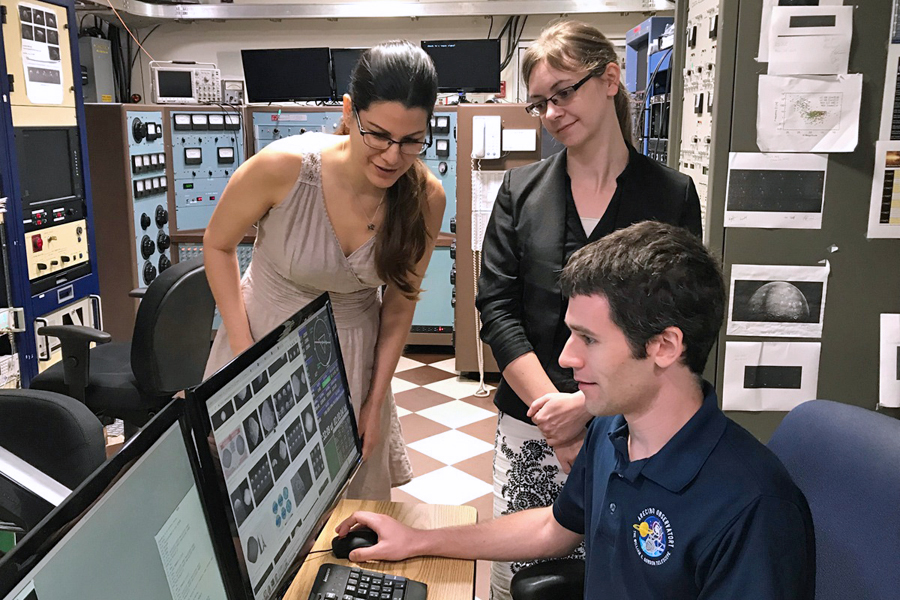NSF grants $5M+ in funds to create STEM education center at Arecibo Observatory

The National Science Foundation has announced an investment of more than $5 million over five-years for a collaborative partnership among three higher education institutions and Cold Spring Harbor Laboratory to establish a world-class multidisciplinary educational center at the Arecibo Observatory site in Puerto Rico.
This announcement follows the Arecibo Observatory closure on Aug. 14 upon running out of operational funding and nearly three years after the NSF decommissioned the telescope following its collapse on Dec. 1, 2020.
The new center – named the Arecibo Center for Culturally Relevant and Inclusive Science Education, Computational Skills and Community Engagement (Arecibo C3) – will serve as a catalyst for increased and inclusive engagement in various science, technology, engineering and mathematics disciplines, as well as cutting-edge research and workforce development initiatives by students, teachers, researchers, local communities and the public within and outside of Puerto Rico, the agency stated.
“The new educational center builds on the great scientific, educational and cultural legacy of the Arecibo Observatory and is closely aligned with NSF’s goal to create STEM opportunities everywhere,” said James L. Moore III, NSF assistant director for STEM Education.
“The center aims to create new opportunities for STEM education, exploration, discovery, engagement and participation of students, scientists and researchers in various STEM disciplines ranging from astronomy and radio science to biological, computer and natural sciences in Puerto Rico and beyond,” he added.
Funded under the Arecibo Center for STEM Education and Research (ACSER) solicitation, this new educational center aligns with the CHIPS and Science Act of 2022, which “encourages the National Science Foundation, in consultation with other federal agencies, to explore opportunities for strengthening and expanding the role of the Arecibo Observatory in Puerto Rico through education, outreach and diversity programs, and future research capabilities and technology at the site.”
Four institutions — Cold Spring Harbor Laboratory, University of Puerto Rico in Río Piedras, Puerto Rico’s Universidad del Sagrado Corazón and the University of Maryland, Baltimore County — will work together to establish Arecibo C3 and collaborate with Ciencia Puerto Rico and STEM Program Evaluation, Assessment and Research.
The center’s outreach plan will include dynamic collaborations with members of the Puerto Rico STEM community, the University of Puerto Rico system, private universities and STEM academic organizations to continue engaging faculty, K-12 students, teachers, families and the public.
The new center is expected to open in early 2024 and will continue Arecibo Observatory’s legacy in Puerto Rico and the STEM community through education, outreach and workforce development.
Arecibo C3 will house a research laboratory and an interactive science center open to the public.
“It will honor the observatory’s rich contributions to astronomy and extend its focus to interdisciplinary, fundamental and applied research that links astronomy data with touch, sound and vision,” the NSF stated. “The center’s research will also integrate the life sciences, computer and data sciences, and ultimately the breadth of all areas of STEM education.”
“Us humans are the ones who link all the sciences of the universe. In honoring the legacy of the Arecibo Observatory, the NSF has entrusted Puerto Rico with a timely initiative centered on community, culture, education, all existing sciences and those yet to emerge,” said Arecibo C3 Executive Director Wanda Díaz-Merced.
“Through Arecibo C3, the scientific and harmonious vitality of the puertorriqueños as maximum seekers of scientific truth will lead the path of science, focusing on the people and the maximum expression of the human intellect that resides in the constantly evolving life of the entire community,” she added.
Prioritizing community engagement
Arecibo C3 will prioritize community engagement, especially for underrepresented groups, in its STEM education and outreach programs. It will expand opportunities for student research and workforce development, foster professional development and support collaborative research between faculty, K-12 teachers and students in Puerto Rico and the U.S. mainland.
Moreover, Arecibo C3 will feature a public science center that will focus on scientific themes, research and innovations through exhibits, educational programs, science talks, films and enrichment activities.
An Arecibo Observatory Legacy Exhibition will be a focal point of the science center, the agency noted.










